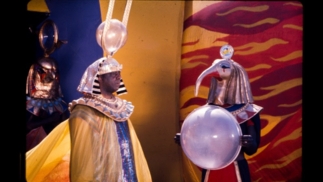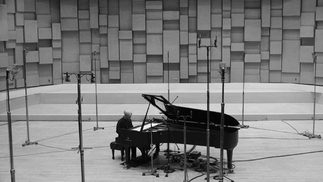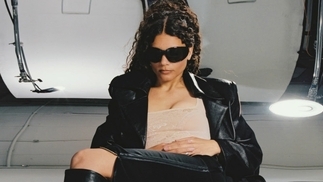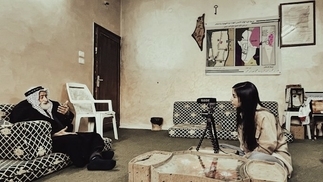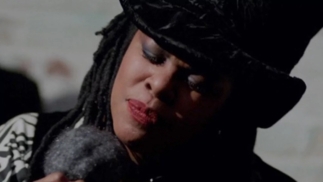BT'S OPUS OF DISCOVERY
Critically acclaimed and wholly unstoppable, musical genius BT doesn’t break boundaries. For him, they don’t exist.

Everyone told BT it was impossible. Record labels and agents, promoters and peers said his vision for ‘Electronic Opus’, a unique mixture of live electronic and orchestral music that reimagines his life’s body of work, was not fiscally feasible. It could not be done.
So, BT turned to his fans.
If anything speaks to an artist’s influence, it is to have an audience so deeply appreciative of his work that they rush to partner in the creation of more. That is exactly what BT found waiting for him when he finally summoned the courage to ask the people he’s shared his music with for two decades to help him realize the most seminal album of his career to date. They responded with resounding support.
“I have this incredible fanbase that’s stayed with me for 20 years. This group of people has given so much to me: I’ve stood on the side of the stage and held both of someone’s hands while they cried and told me a story about a song of mine being played at their parent’s funeral. I’ve come offstage at a festival and found someone telling me about how they gave birth to my music.”
Brian Transeau, the man known as BT, was born in a small suburb of Maryland. He fell in love with making music as a child, long before his brilliant journey as a Grammy-nominated artist and industry pioneer began. “Growing up, I was told by parents and friends’ parents that a career in the arts was an impossibility,” he recalls wryly. “But these people, my fans, they supported me and allowed me to do this amazing thing.”
‘Electronic Opus’ is a testament to the fact that there are no impossibilities in art. The album’s Kickstarter campaign raised over $250,000 from more than 2,000 supporters across the globe. Recorded in Prague, ‘Electronic Opus’ brought together a 100-piece classical orchestra to perform 14 of BT’s greatest hits, rearranged, alongside him. Iconic video game composer Tommy Tallarico joined the project on production duties, supplying his knack for epic orchestral arrangement. Acclaimed Irish video game composer/conductor Eímear Noone, the woman who brought World Of Warcraft’s soundtrack to life, served as the orchestra’s conductor. Just in case all of that wasn’t enough to guarantee a thrilling outcome, ‘Electronic Opus’ was mixed at Skywalker Ranch, George Lucas’ sonic paradise.
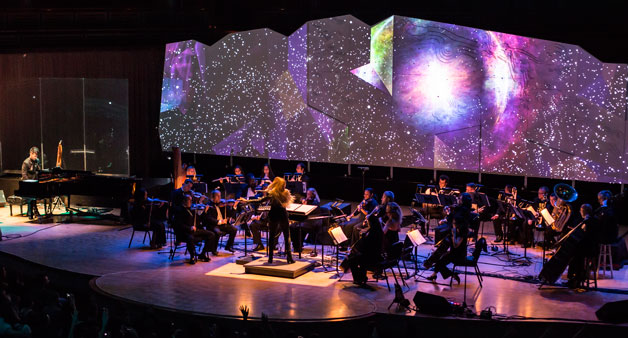
“It’s something that I’m really proud of,” BT tells DJ Mag USA over what is to become a two-hour Skype call. As he should be. Listening to the album, the impact BT’s work has had on people’s lives and their memories is apparent. ‘A Million Stars’ reminds us that we will feel love again while ‘Skylarking’ spins us upwards through clouds of delight, just like it did in its original iteration. ‘Satellite’ evokes tears from even the driest eyes, as if the quivering strings of the orchestra’s violins are physically drawing their bows across hearts. In the lushness of each song, we can hear all of the reasons why people have played it during a funeral or a birth, and why they felt so compelled to help bring this album to life.
“Honestly, the birthing process for ‘Electronic Opus’ was probably the most painful creative experience I’ve ever been through,” BT insists. “These songs have so much inherent meaning to me. They’re sort of like my journal entries across this large swath of my time here on Earth, and each represents a period or an experience ... profound elation and love and loss.”
Prior to its official release in October 2015, ‘Electronic Opus’ premiered with a live performance at Miami’s Adrienne Arsht Center during Winter Music Conference, replete with a full orchestra and stunning visuals. Kickstarter backers flew in from every corner of the world to experience the music they had a hand in creating and even BT’s childhood hero, ‘80s synthpop icon Howard Jones, was in attendance. It was a crowning achievement. “There was something about the night that was truly transcendent and magical,” BT smiles.

His daughter Kaia joined him onstage that night, for the very first time. She has grown up seeing her father perform, spending hundreds of hours in studios all over the world. “I’ve conducted with her under one arm ... she was just a baby then. I held her under my left arm while I held the baton with my right arm,” he laughs, picturing the scene and then softens, growing pensive. “It was a full-circle moment for my daughter, too. She’s at an age where she understands more of what I’ve written about her and about our relationship.”
THE QUICKENING
The relationships BT forges through his music are reflected in moments like those with his 11-year-old daughter: The song he wrote for her when she was a baby is as relevant today as it was when she was too small to know it revealed the depths of her father’s love.
Music goes through phases, like children stretching upwards towards the sky faster than parents would like, reckless in their growth, often forgetting who they are. Electronic dance music, for all its sparkling sounds and triumphant moments, is no different. BT observes the shortening shelf lives of songs, the commodification of something once so unique and the perversion of entire genres by collections of stale templates, with sadness.
“There’s an author that I love, Carlos Castaneda — he talks about this. He called it ‘the quickening’ and it’s this idea of the compression of everything,” BT explains. “I think we are seeing that expressed throughout society.” He tells us of a study he read that suggested the average attention span of a person in 2007 was 11 seconds. The study concluded that by the year 2016, our attention spans would be negative.
“You would be bored before you even listened to something!” he exclaims. And though he acknowledges that there is truth to such a claim in the instant gratification society seeks, BT is quick to point out that the ephemeral nature of music is not a new phenomenon.
“When Beethoven would write short canons and fugues, they would be played by a quartet at some soiree and the help would then wrap up the food in the sheet music. So really, there’s a lot of his music that we’ll never hear,” he explains, satisfied in small measure by this historical fact.

Still, there is something about the American EDM scene that unsettles BT. It’s the teenager he raised that has lost its way.
“The thing that I think is exclusively American is this sort of saccharine-coating of the most palpable elements of electronic music. We’ve commoditized and fast food packaged dance music. That’s strictly an American phenomenon,” he insists. “My hope is that in our country over the next five-10 years, as the bubble for this corporate, commercialized electronic music begins to fade, what rises in its place is all the wonderful music that’s being made out there right now. It’s just one step outside of this EDM music that is bringing droves of people into our community.”
BT pauses for a moment, reflecting. In the silence we can hear how much he really hopes he is right.
DISCOVERY
“I’m 12 years old and I’m riding my bike, my crappy little BMX bike, up to Rockville Pike in Rockville, Maryland, to a place called Yesterday & Today Records. I go in there and there are guys in their 30s and 40s who work there, who know so much about music. There are crates upon crates of records, and there are cassettes — there aren’t even CDs yet,” BT recalls, laughing. “I would sit with these guys for hours in the summertime and talk to them.”
We imagine Brian Transeau as a precocious child, his windswept hair falling across his face in the same way it does today, eyes glittering as the shop employees let him thumb through shelves crammed with sleeves of vinyl. They tell him stories about a man named Matt Johnson and his new band called The The; about a piano player named Jules Holland who is magical; about a genius engineer named Flood.
BT’s memories tumble out of him in a stream of delight as he recalls his 12-year-old self crouched over crates at that local shop, surrounded by sounds waiting to be discovered.
“But those formative experiences of discovering music are now different,” he says with nostalgia. “You go to a SoundCloud link and it’s no wonder people’s attention spans are less than 11 seconds. People click through a freaking waveform and formulate an opinion about something in an instant.” For all the good that technology has brought us, there is an equally powerful downside: “Now, because you have everything on the internet, there’s an immediacy that is decreasing people's understanding of the joy of discovery of music.”
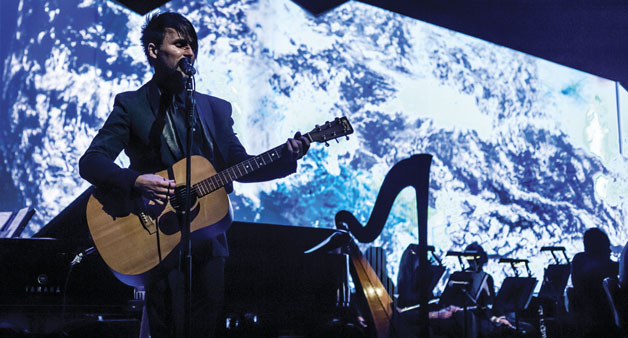
There are joyful experiences BT would never trade for anything. Like listening to records during his childhood with two of his best friends — Ali Shirazinia, who is now known as techno artist Dubfire and another friend called Hamid, now an organic chemist. “I remember us all sitting in Hamid’s bedroom at about age 13 after we had ridden our bikes up to Yesterday & Today Records and bought an album ... ‘A Walk Across The Rooftops’ by The Blue Nile. We sat on the floor as it was turning dusk and we listened to that entire album twice as the darkness settled in,” he remembers. “Those moments, for young people discovering music today, are for all intents and purposes gone. And I have a sadness about that, but only because I remember how awesome it was.”
The joy of discovery, that very thing which defines childhood and also propels a music scene into existence, is dulled by the ability to hear whatever we want, whenever we want it. No one has to ride a crappy BMX bike to the record store anymore.
A COMPLEX MACHINE
Those innovators who have shaped generations through sound cannot be defined by a single album, award or contribution. They tend to make their magic alone in the dark, a solitary endeavor that eventually coaxes new moments into the world to resonate across centuries: Ling Lun; Claude Debussy; Philip Glass; Nile Rodgers; Brian Eno; BT.
Peter Gabriel has called BT “not only a virtuoso programmer, but an extremely gifted musician.” But even a compliment from one of 20th century music’s most beloved figures does not explain how pivotal BT’s contribution to 21st century music really is. How do you define a multi-instrumentalist, multi-platinum artist who pioneered trance and IDM (intelligent dance music) while scoring Hollywood films and television series, building sound software, inventing production techniques and collaborating with the most influential acts on Earth?
The answer is, you don’t. You just ask him what he’s been up to lately.
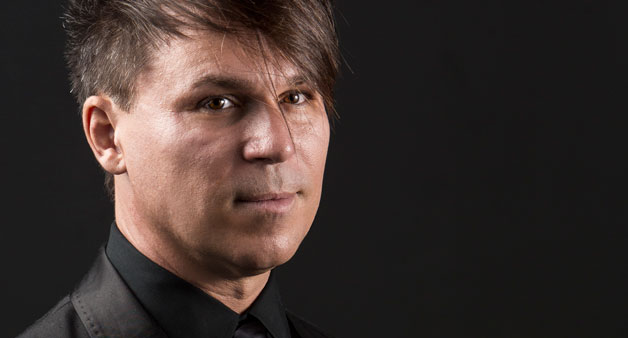
BT’s list of current projects says it all. How one person can supply the world with so much remains uncertain, but we suspect parallel universes and quantum leaping may be in play. Forget 2015. Here’s what he is juggling going into 2016:
- Working with Disney and its creative team on a massive, top-secret project for the past year, with eight more months left to go
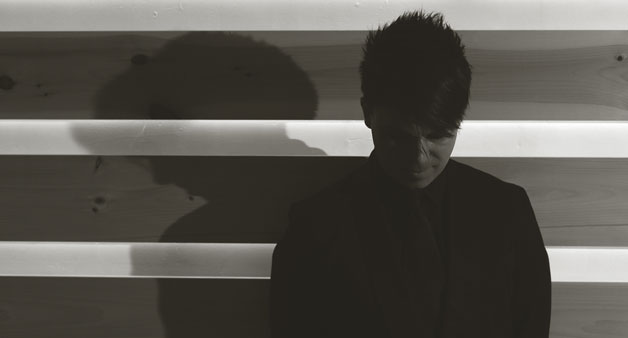
A track called ‘Chromatophore’ takes us to a star nursery in the Orion Nebula, where we float amid strands of rainbow-colored gas. Another, titled ‘Ω’, the mathematical symbol for the density of the universe, whisks us through the folds of time with its Asian-inspired melody and deposits us on the very edge of the future. There is a 12-minute cut called ‘Indivism’ that is a sonic odyssey in its own right, stretching out before us like an entire life lived “in which no two bars are the same,” according to BT.
We smile when we hear ‘582’, an ambient quilt of Tibetan singing bowls that closes the album. Because while BT did not tell us so, we suspect the song’s name is a reference to 582 Hz, the frequency at which it is said healing on a cellular level occurs. We are reminded that humanity’s story of existence has always been passed down in whispers.
This LP is a journey of discovery, homage to that very thing BT is so passionate about. It reveals both its beginning and end at once; the star we still see burning brightly, long after it has collapsed upon itself in a magnificent gasp. Ultimately, the album is an exercise in non-duality — assurance that things are different but never separate. It is something BT himself innately embodies: the self-proclaimed technologist who is as fulfilled by complex machines as he is standing in front of an orchestra, baton in one hand, infant daughter in the other.
Pics: ANDREW RAUNER

